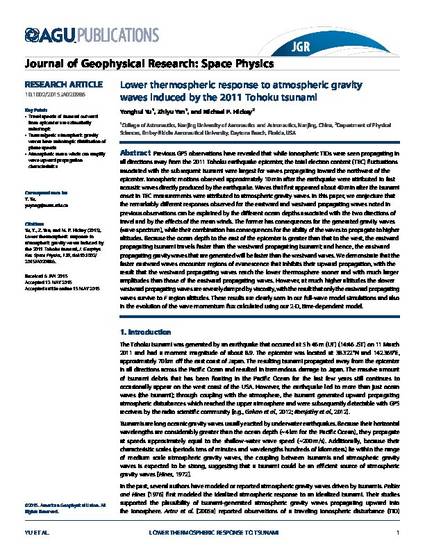
Previous GPS observations have revealed that while ionospheric TIDs were seen propagating in all directions away from the 2011 Tohoku earthquake epicenter, the total electron content (TEC) fluctuations associated with the subsequent tsunami were largest for waves propagating toward the northwest of the epicenter. Ionospheric motions observed approximately 10min after the earthquake were attributed to fast acoustic waves directly produced by the earthquake. Waves that first appeared about 40 min after the tsunami onset in TEC measurements were attributed to atmospheric gravity waves. In this paper, we conjecture that the remarkably different responses observed for the eastward and westward propagating waves noted in previous observations can be explained by the different ocean depths associated with the two directions of travel and by the effects of the mean winds. The former has consequences for the generated gravity waves (wave spectrum), while their combination has consequences for the ability of the waves to propagate to higher altitudes. Because the ocean depth to the east of the epicenter is greater than that to the west, the eastward propagating tsunami travels faster than the westward propagating tsunami; and hence, the eastward propagating gravity waves that are generated will be faster than the westward waves. We demonstrate that the faster eastward waves encounter regions of evanescence that inhibits their upward propagation, with the result that the westward propagating waves reach the lower thermosphere sooner and with much larger amplitudes than those of the eastward propagating waves. However, at much higher altitudes the slower westward propagatingwaves are severely damped by viscosity,with the result that only the eastward propagating waves survive to F region altitudes. These results are clearly seen in our full-wave model simulations and also in the evolution of the wave momentum flux calculated using our 2-D, time-dependent model.
Available at: http://works.bepress.com/michael_hickey/50/
